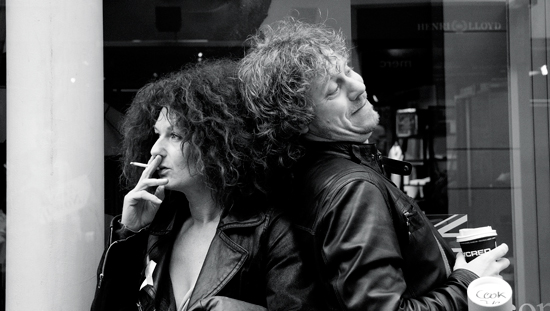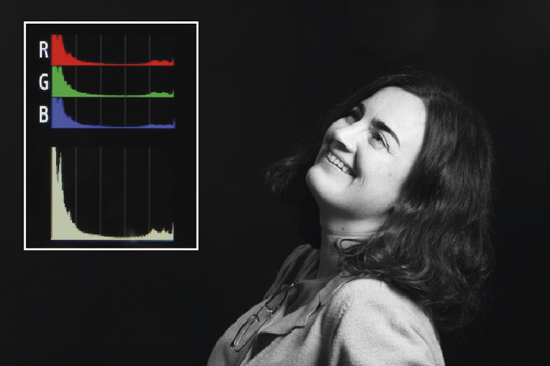
APOY Competition Round Ten – Life in Monochrome
**Entries must be received by 5pm on 23 November 2012**
Please do NOT send your entries to the general AP email address
Please visit the APOY12 home page to find all the rules for entry, terms and conditions, the APOY entry email address, and the disclaimers that must be copied and pasted into an email entry.
Round 10, the final round, of this year’s Amateur
Photographer of the Year competition, sponsored by Samsung and Jessops, is Life
in Monochrome. Black & white photography is as popular as it has ever been.
Take a look back through previous rounds of APOY and you’ll see that monochrome
images share equal space with their colour-saturated kin. Black & white
appeals due to its ability to bring out the atmosphere in a scene, and this is
particularly true under the right lighting conditions. Removing colour draws
the viewer’s attention even closer to the subject, so see below for some
advice on what to look out for. Images likely to catch the judges’ eye are
those that are creative, skilfully composed and technically excellent.
As always, we have thousands of pounds’ worth of fantastic
camera equipment up for grabs, as well as the chance to be crowned Amateur
Photographer of the Year 2012. The closing date for round 10 is 23 November
2012. The top two winners will each receive a fantastic Samsung camera, while
the third-prize winner will receive a £250 Jessops voucher. The top 30 highest
scoring photographs will be published in our special AP 22-29 December 2012
Christmas issue, while the scores from the top 50 images will be posted on our
website.
 Photo by Dawn O’Connor
Photo by Dawn O’Connor
For information explaining how to enter can be found on the APOY 2012 home page. Please use your full name as the file name and paste the disclaimer into the body of your email if you are sending your entry electronically. We also need to know where and how you took your image, plus the camera and lens used with aperture and focal length details. Also, include a telephone number and your postal address so we can contact you if you win.
For round 10 of APOY, we’re looking for eye-catching black
& white images. Monochrome still has its place firmly etched out in the
photographic world. In fact, it’s as popular today as it ever was. The
expressive nature of this medium has always appealed to photographers, with many
top image-makers the world over working with nothing but black & white. And
it’s not difficult to see why. Under the right conditions, black & white
can bring real atmosphere to an image. More than that, though, black &
white ensurse that the subject is allowed to speak for itself without the
distraction of colour – something that is particularly relevant when employing
low-key lighting.
With this in mind, it’s crucial to think about why you are
shooting in black & white. Does the subject really lend itself to
monochrome? Black & white is an excellent way of exploring shape and
texture, and there are particular subjects that lend themselves to the medium
brilliantly. It’s also worth bearing in mind that monochrome doesn’t just mean
‘black & white’. Monochrome actually refers to photographs, drawings and
paintings of one shade or colour. That opens up the possibilities even more,
and means that digital/manual toning is more than acceptable.
 1st prize
1st prize
The first-prize winner will receive a Samsung NX210 with 20-50mm
f/3.5-5.6, Samsung 30mm f/2 and Samsung 16mm f/2.4 lenses, plus a 16GB SDHC
Plus memory card, worth a total of £1,346.99. The NX210 is an advanced compact
system camera with a 20.3-million-pixel, APS-C CMOS sensor. It has 8fps
continuous shooting, built-in Wi-Fi for email, social networking and transfer,
and an ISO range of 100-12,800 that lets you take high-speed photos even in low
light. Samsung’s slender, all-purpose i-Function 16mm lens offers great
versatility, with quick and easy one-touch access to all your camera’s manual
settings.
 2nd prize
2nd prize
The second-prize winner will receive a Samsung EX2F high-end
compact camera and a 16GB SDHC Plus memory card worth a total of £449.99. The
EX2F has a 12.4-million-pixel, BSI (Back Side Illuminated) CMOS sensor, 3.3x
f/1.4 (24-72mm equivalent) zoom lens and full HD 1080 video. It has built-in
Wi-Fi for email, social networking and transfer, an ISO range of 80-3200 (up to
12,800 in extended mode) and a 3in AMOLED articulated screen.
 3rd prize
3rd prize
The third-prize winner will receive a £250 Jessops Gift Card. Jessops Gift Cards are only redeemable in store and not online. Overseas winners will be contacted by phone about how to claim their prize.
Here are some tips and suggestions to help you get started
Why not try…
 Photo by Damien Demolder
Photo by Damien Demolder
Light
Light is perhaps the first thing that we think of when
considering shooting in monochrome. You’ll often hear such terms as ‘low-key’
or ‘chiaroscuro’. More often than not, this simply refers to the application of
extreme tonal contrasts.
This is generally achieved in the studio environment
using a single key light and a reflector. However, this kind of effect can be
found in many areas and is most definitely a lighting technique to be aware of.
But that’s not to say all black & white images have to be saturated in
moody lighting and atmosphere. Black & white works in most lighting
conditions, although it can look a little unnatural when used with high-key
(bright) light.
 Photo by Colin Roberts
Photo by Colin Roberts
Using the Histogram
Along with the depth of field preview button, histograms are
one of the most neglected functions of a camera. The histogram is a simple
graph representing the tonal range of your image. The bars (vertical axis) show
how many pixels are present within a brightness level. In an evenly exposed
image, the pixels are clustered in the middle areas with some spreading out to
the sides. In an underexposed (or dark) image, they will be mostly on the left.
Overexposure will see them weighted towards the right. This is helpful to know
when tackling monochrome photography, as seeing where your pixels lie will tell
you just how black and white your image’s tones will be. Of course, it may be
possible to fix these things in your image-editing software, but nothing beats
getting it right first time.
 Photo by Gemma Padley
Photo by Gemma Padley
Your Subject
Perhaps the first thing that you should ask yourself is
whether your subject will really benefit from being shot in monochrome. What
will those extremes of tonal contrast bring out in an image? As we’ve said,
black & white can be a great way of drawing attention to a subject and
exploring the nature of the light in a particular scene. But also bear in mind
that this round allows you to tone your images, which brings in the
possibilities of cyanotype and sepia style imagery. Toning is still a hugely
popular craft, so it is a technique worth exploring. You never know – it could
bring out the hidden character of your shot.
Please visit the APOY12 home
page to find all the rules for entry, terms and conditions, the APOY
entry email address, and the disclaimers that must be copied and pasted
into an email entry.
If you wish to enter by post please remember to include your entry form.
**Entries must be received by 5pm on 23 November 2012**
Please do NOT send your entries to the general AP email address.






